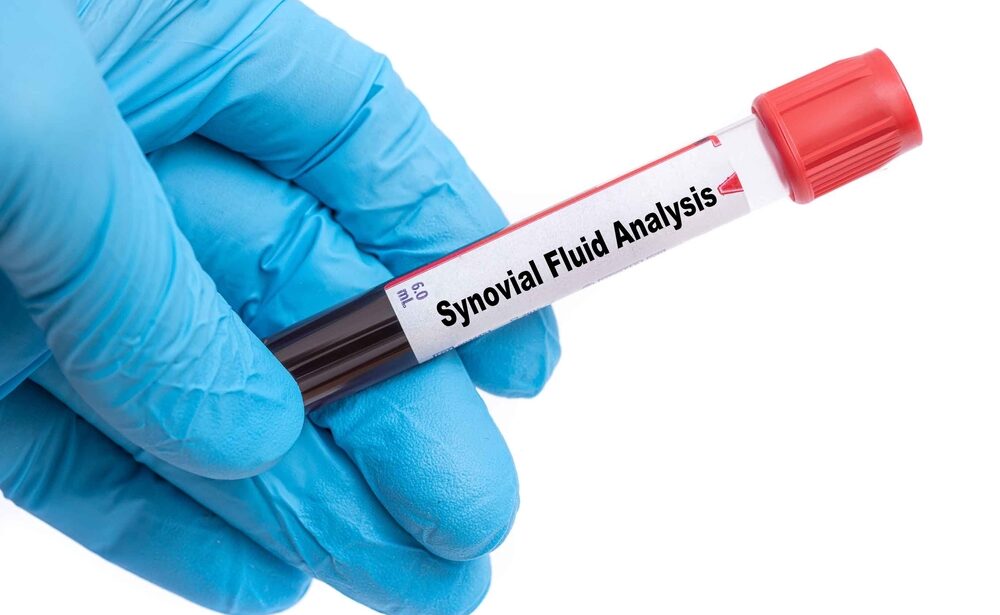Overview
Synovial fluid analysis is a diagnostic procedure that involves the examination of synovial fluid, a viscous fluid found in joint cavities. This fluid serves several essential functions, including lubricating joints, reducing friction, and providing nutrients to cartilage. Analyzing synovial fluid can help diagnose various joint disorders and conditions, including arthritis, infections, and inflammation.
Indications for Synovial Fluid Analysis
Synovial fluid analysis is indicated in several clinical scenarios, including:
- Joint Pain Evaluation: Investigating the cause of joint pain, swelling, or stiffness.
- Arthritis Diagnosis: Differentiating between types of arthritis, such as osteoarthritis, rheumatoid arthritis, and septic arthritis.
- Infection Assessment: Detecting infections within the joint, such as septic arthritis or gout.
- Inflammatory Conditions: Evaluating conditions that lead to joint inflammation and effusion.
- Post-Traumatic Assessment: Assessing joint fluid following an injury to rule out bleeding or infection.
Synovial Fluid Analysis Procedure
- Pre-Procedure Preparation:
- The healthcare provider explains the procedure to the patient and obtains informed consent.
- Patients may be advised to avoid certain medications (e.g., anticoagulants) before the procedure.
- Joint Aspiration (Arthrocentesis):
- The procedure typically involves aspiration of synovial fluid from the joint space using a sterile needle and syringe.
- The patient is positioned comfortably, and the skin over the joint is cleaned and sterilized to minimize infection risk.
- Using ultrasound guidance or physical examination, the provider identifies the appropriate site for needle insertion and carefully aspirates the fluid.
- Sample Collection:
- The aspirated synovial fluid is collected into sterile containers for analysis.
- The sample is labeled with patient information and transported to the laboratory for testing.
- Laboratory Analysis:
- The synovial fluid is analyzed for various parameters, including:
- Physical Examination: Assessment of color, clarity, viscosity, and volume.
- Cell Count and Differential: Evaluation of the total white blood cell count and the proportion of different types of cells, which helps identify infections or inflammatory conditions.
- Crystal Analysis: Examination for crystals, which can indicate gout or pseudogout.
- Culture and Sensitivity: Testing for the presence of bacteria or other pathogens to diagnose infections.
- Biochemical Tests: Assessing levels of specific substances, such as glucose and protein, to provide additional diagnostic information.
- The synovial fluid is analyzed for various parameters, including:
- Result Interpretation:
- A qualified laboratory professional or healthcare provider interprets the test results and correlates them with clinical findings to arrive at a diagnosis.
- Reporting:
- The results are compiled into a report that is shared with the referring physician, who discusses the findings with the patient and formulates a management plan based on the results.
Benefits of Synovial Fluid Analysis
- Accurate Diagnosis: Provides critical information for diagnosing various joint disorders and conditions.
- Guidance for Treatment: Identifies the specific type of arthritis or infection, aiding in targeted treatment approaches.
- Minimally Invasive: Joint aspiration is a relatively simple and minimally invasive procedure that can be performed in an outpatient setting.
- Therapeutic Benefits: In addition to diagnostic purposes, synovial fluid aspiration can relieve joint swelling and pain by removing excess fluid.
Possible Risks and Limitations
- Infection Risk: As with any invasive procedure, there is a small risk of introducing infection at the aspiration site.
- Bleeding: Some patients may experience minor bleeding or bruising at the needle insertion site.
- Joint Injury: Rarely, there may be damage to the joint structures or surrounding tissues during aspiration.
- Discomfort: Patients may experience temporary discomfort or pain during and after the procedure.
Final Results
With synovial fluid analysis, patients can expect:
- Informed Diagnosis: Accurate and timely diagnosis of joint conditions, leading to effective management strategies.
- Personalized Treatment Plans: Tailored treatment approaches based on the specific type of arthritis or infection identified.
- Improved Quality of Life: Effective management of joint disorders can significantly enhance patients’ mobility and overall quality of life.

